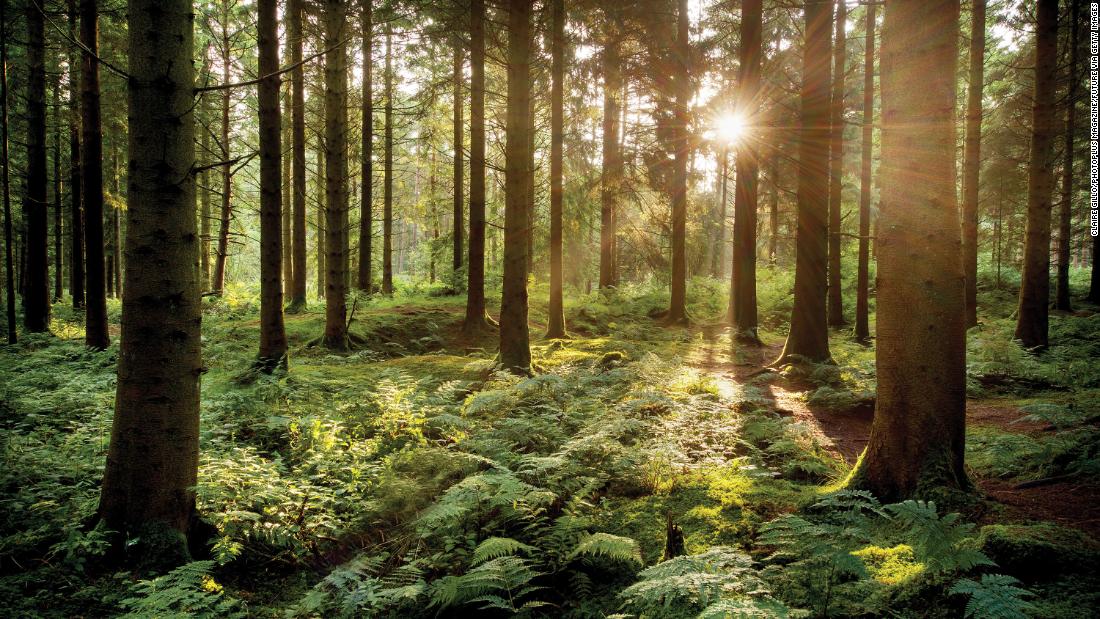
[ad_1]
Researchers studied 3,568 adolescents aged 9 to 15 at 31 London schools over four years to examine associations between natural environments and cognitive development, mental health and general well-being.
Using satellite vegetation data, the researchers calculated the daily exposure of adolescents to “green spaces,” such as woodlands, meadows and parks, and “blue spaces,” including rivers, lakes and the sea, within 50 meters (164 feet), 100 meters (328 feet), 250 meters (820 feet) and 500 meters (1,640 feet) from their home and school.
Higher daily exposure to the forest was associated with higher scores for cognitive development – measured by a series of memory-based tasks – and a 17% lower risk of emotional and behavioral problems two years later, the researchers said, adding that they adjusted for other variables, such as age, ethnicity, gender, parents’ occupation, type of school and air pollution.
Exposure to green spaces has been associated with a beneficial contribution to the cognitive development of young people, the researchers explained. The same associations were not seen with blue space exposure – although the sample of children studied generally had little access to it, the researchers noted in the study published on Monday.
Lead author Mikaël Maes said that while the team established an association between forests and better cognitive development and mental health, there is no causal link between the two – something that could be studied in the future.
“Currently, the mechanisms for which humans receive mental health or cognitive benefits from exposure to nature are unknown. Scientific research on the role of human senses is essential for establishing a causal link,” Maes, PhD student at University College London’s School of Geography, Biosciences and Imperial College London School of Public Health, told CNN.
Maes said in an email that a possible explanation for the link between the woods, cognition and mental health could be that audiovisual exposure through vegetation and animal abundance – which are more common in the woods – offers psychological benefits.
However, there were limitations to the study. The team said the research assumed that living or going to school near natural environments means more exposure to them, which is not always the case. Crime rates by area were also not taken into account.
The researchers also noted that more than half of the participants had parents who worked in managerial or professional occupations, meaning that adolescents from other socio-economic groups may be under-represented in the study. Students with special educational needs may also react differently from the peers represented in the research.
“New ideas”
“The results are impressive and underscore the importance of time spent outdoors on such a scale,” Carol Fuller, director of the Institute of Education at the University of Reading, told CNN.
“That said, while the results are encouraging, what we don’t get from the study is why we see the results we do? While the authors speculate on the reasons, it’s crucial to engage directly with young people to understand the results from the perspective of those involved, ”said Fuller, who was not associated with the research.
“The research adds to a growing body of work on the importance of being on the outside on things like confidence, resilience and self-efficacy,” she said.
“It makes sense that if you can develop these skills, then things like cognition and learning outcomes will improve. Being outdoors allows young people to learn a range of different skills and engage in various experiences, important in developing these underlying traits, ”she added. .
Stella Chan, professor of evidence-based psychological treatment at the University of Reading, said in an email to CNN that the research offered “new information” with “the potential to explain how we can better support intellectual development , the health and well-being of young people. “
“As the authors note, just because someone lives near natural environments doesn’t mean they could or would have access to that space, and of course, how people use space is another big one. question to ask, ”said Chan, who was not involved in the study, said.
“Based on these results, it would be important to study how factors associated with exposure to natural environments, such as physical activity and going out with friends, can help improve resilience, health and the well-being of adolescents, ”Chan said.
[ad_2]
Source link